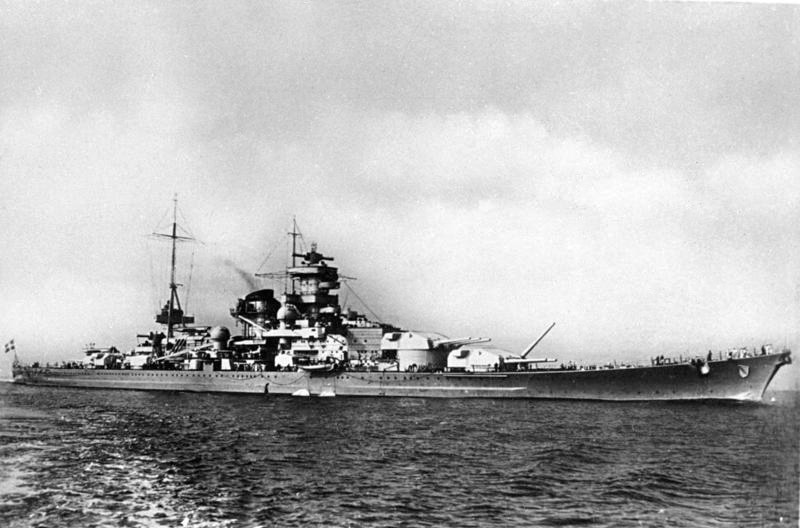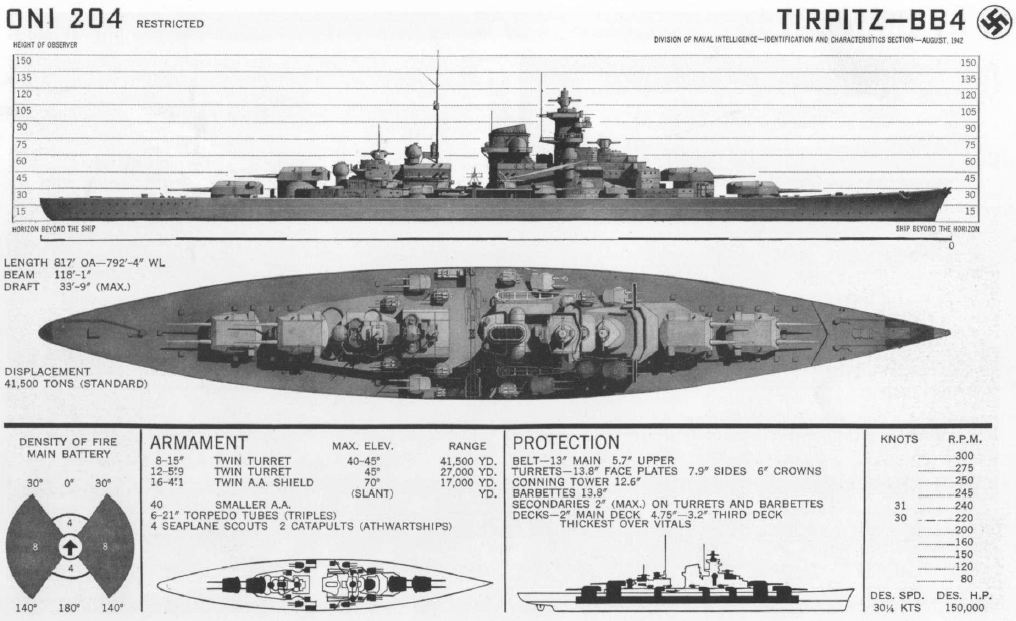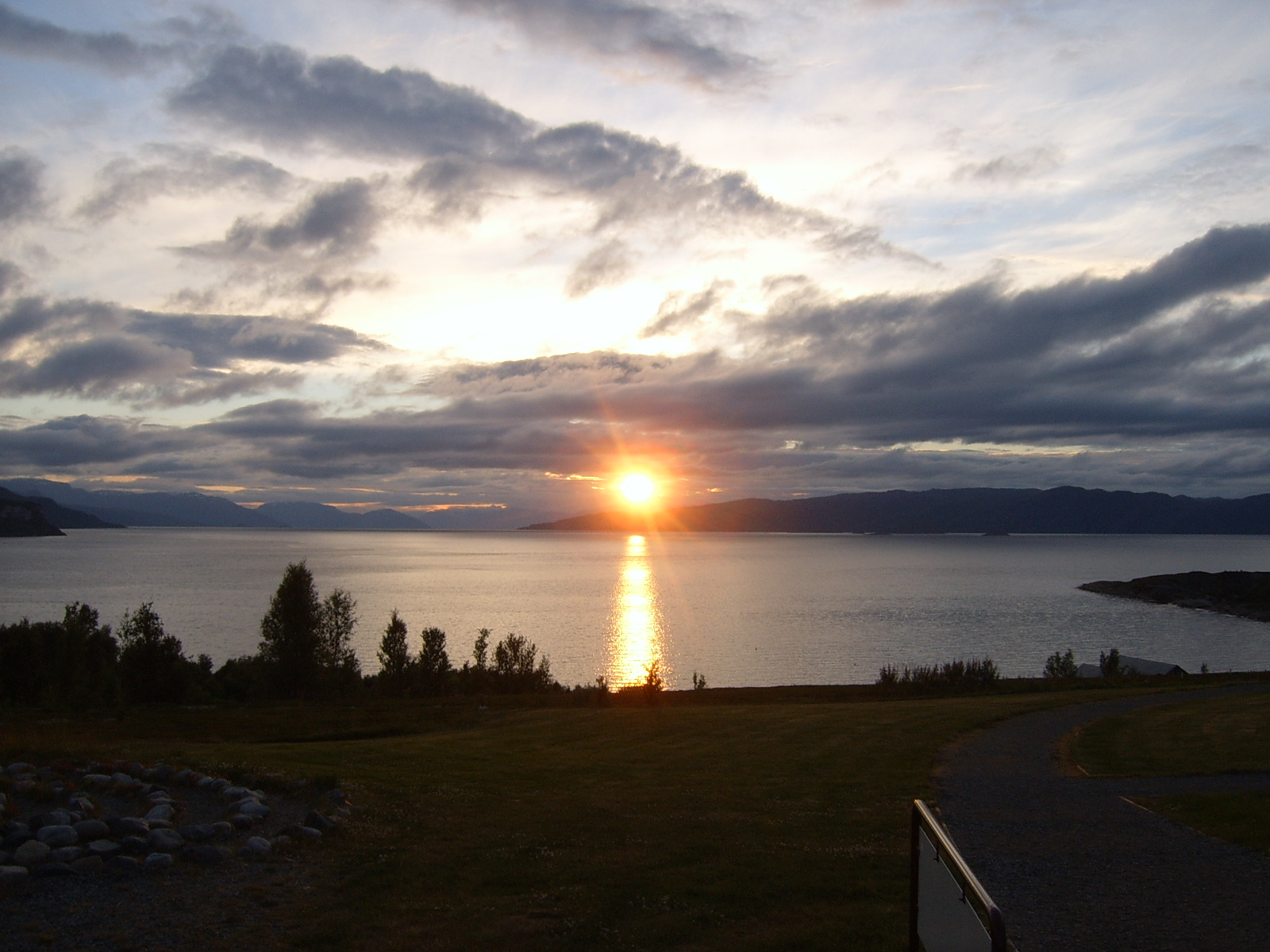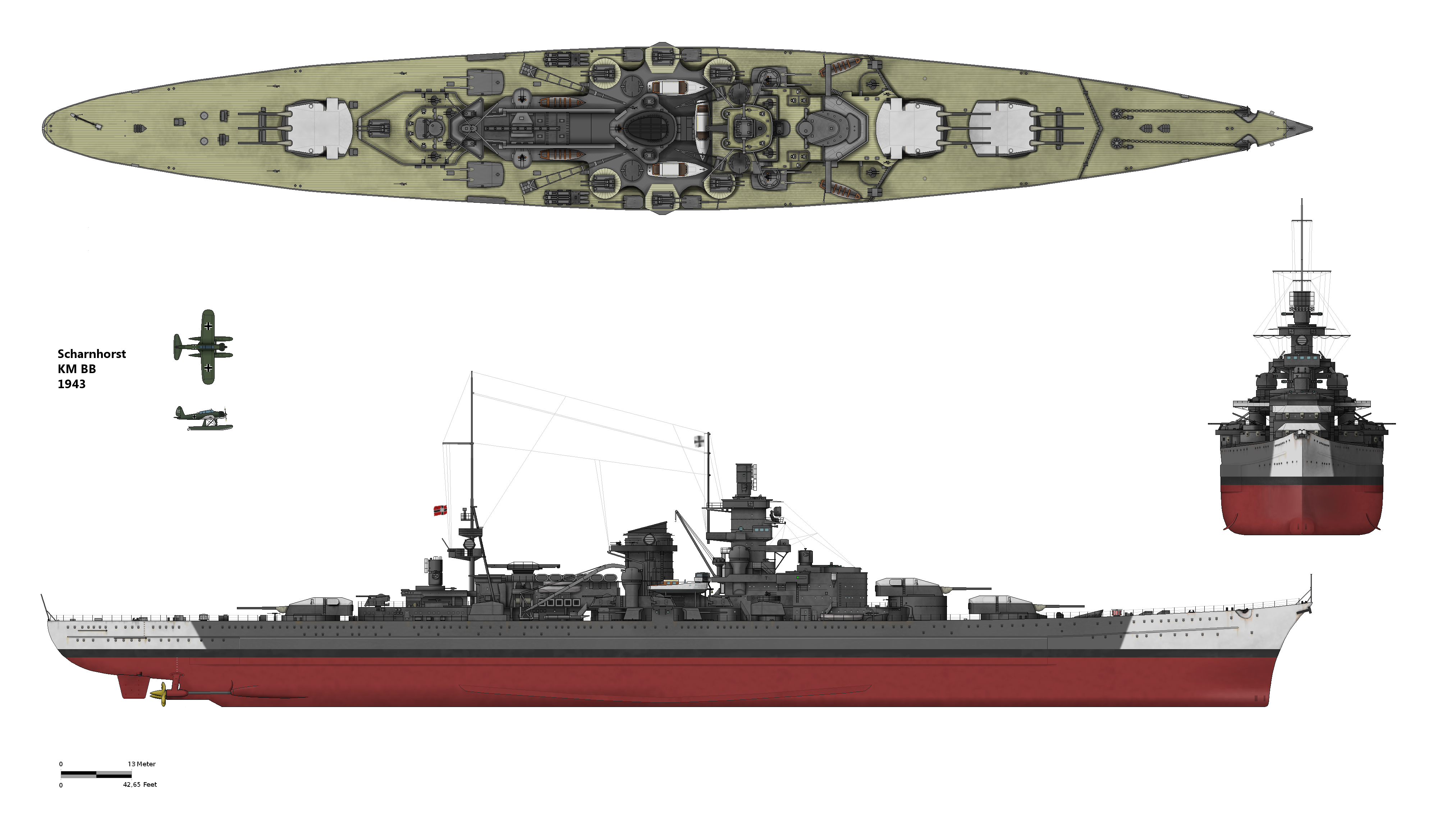|
Convoy JW 55B
Convoy JW 55B was an Arctic convoy sent from Great Britain by the Western Allies to aid the Soviet Union during World War II. It sailed in late December 1943, reaching the Soviet northern ports at the end of the month. All ships arrived safely. During the voyage JW 55B was approached by a German force centred on the battleship ; no contact was made with the convoy, but ''Scharnhorst'' was sunk, in the Battle of the North Cape, by the battleship , a handful of Royal Navy light surface combatants, and Norwegian destroyer . Ships The convoy, comprising 19 merchant ships, departed Loch Ewe on 20 December 1943. Close escort was provided by two destroyers and three other escort vessels. There was also an Ocean escort, comprising the destroyer ''Onslow'' (Capt J A McCoy commanding) and seven other Home Fleet destroyers. The convoy was initially accompanied by a local escort group, and joined later by the ocean escort of convoy JW 55A, out of Murmansk. A cruiser cover force comprising ... [...More Info...] [...Related Items...] OR: [Wikipedia] [Google] [Baidu] |
Bundesarchiv DVM 10 Bild-23-63-07, Schlachtschiff "Scharnhorst"
, type = Archive , seal = , seal_size = , seal_caption = , seal_alt = , logo = Bundesarchiv-Logo.svg , logo_size = , logo_caption = , logo_alt = , image = Bundesarchiv Koblenz.jpg , image_caption = The Federal Archives in Koblenz , image_alt = , formed = , preceding1 = , preceding2 = , dissolved = , superseding1 = , superseding2 = , agency_type = , jurisdiction = , status = Active , headquarters = PotsdamerStraße156075Koblenz , coordinates = , motto = , employees = , budget = million () , chief1_name = Michael Hollmann , chief1_position = President of the Federal Archives , chief2_name = Dr. Andrea Hänger , chief2_position ... [...More Info...] [...Related Items...] OR: [Wikipedia] [Google] [Baidu] |
HMS Duke Of York (17)
HMS ''Duke of York'' was a battleship of the Royal Navy. Laid down in May 1937, the ship was constructed by John Brown and Company at Clydebank, Scotland, and commissioned into the Royal Navy on 4 November 1941, subsequently seeing combat service during the Second World War. In mid-December 1941, ''Duke of York'' transported Prime Minister Winston Churchill to the United States to meet President Franklin D. Roosevelt. The journey through the seas were rough even for the North Atlantic, Churchill wrote to his wife "Being in a ship in such weather as this is like being in a prison, with the extra chance of being drowned." Between March and September 1942 ''Duke of York'' was involved with convoy escort duties, including as flagship of the Heavy Covering Force of Convoy PQ-17, but in October she was dispatched to Gibraltar where she became the flagship of Force H. In October 1942, ''Duke of York'' was involved in the Allied invasion of North Africa, but saw little action as he ... [...More Info...] [...Related Items...] OR: [Wikipedia] [Google] [Baidu] |
German Battleship Tirpitz
''Tirpitz'' was the second of two s built for Nazi Germany's ''Kriegsmarine'' (navy) prior to and during the Second World War. Named after Grand Admiral Alfred von Tirpitz, the architect of the ''Kaiserliche Marine'' (Imperial Navy), the ship was laid down at the Kriegsmarinewerft Wilhelmshaven in November 1936 and her hull was launched two and a half years later. Work was completed in February 1941, when she was commissioned into the German fleet. Like her sister ship, , ''Tirpitz'' was armed with a main battery of eight guns in four twin turrets. After a series of wartime modifications she was 2000 tonnes heavier than ''Bismarck'', making her the heaviest battleship ever built by a European navy. After completing sea trials in early 1941, ''Tirpitz'' briefly served as the centrepiece of the Baltic Fleet, which was intended to prevent a possible break-out attempt by the Soviet Baltic Fleet. In early 1942, the ship sailed to Norway to act as a deterrent against an Allied inv ... [...More Info...] [...Related Items...] OR: [Wikipedia] [Google] [Baidu] |
Kola Inlet
Kola Bay (russian: Кольский залив) or Murmansk Fjord is a 57-km-long fjord of the Barents Sea that cuts into the northern part of the Kola Peninsula. It is up to 7 km wide and has a depth of 200 to 300 metres. The Tuloma River, Tuloma, Rosta River, Rosta and Kola Rivers discharge into the bay. The eastern shore is craggy and precipitous, the western one is comparatively level. The ports of Murmansk and Severomorsk sit on the east side. Polyarny, Murmansk Oblast, Polyarny, the main base of Russia's Northern Fleet, is on the west side of the bay. tide, Semidiurnal tides in the Murmansk Fjord are as high as 4 metres. In winter, the southern part of the bay may be covered in ice. The Kola Bay Bridge spans the Kola Bay near its southern end See also *List of fjords of Russia Notes * ''This article is based on a translation of the :ru:Кольский залив, equivalent article of the Russian Wikipedia on 13 July 2008''. {{Authority control Bays of the ... [...More Info...] [...Related Items...] OR: [Wikipedia] [Google] [Baidu] |
German Submarine U-716
German submarine ''U-716'' was a Type VIIC U-boat built for Nazi Germany's ''Kriegsmarine'' for service during World War II. Design German Type VIIC submarines were preceded by the shorter Type VIIB submarines. ''U-716'' had a displacement of when at the surface and while submerged. She had a total length of , a pressure hull length of , a beam of , a height of , and a draught of . The submarine was powered by two Germaniawerft F46 four-stroke, six-cylinder supercharged diesel engines producing a total of for use while surfaced, two AEG GU 460/8–27 double-acting electric motors producing a total of for use while submerged. She had two shafts and two propellers. The boat was capable of operating at depths of up to . The submarine had a maximum surface speed of and a maximum submerged speed of . When submerged, the boat could operate for at ; when surfaced, she could travel at . ''U-716'' was fitted with five torpedo tubes (four fitted at the bow and one ... [...More Info...] [...Related Items...] OR: [Wikipedia] [Google] [Baidu] |
German Submarine U-601
German submarine ''U-601'' was a Type VIIC U-boat built for Nazi Germany's ''Kriegsmarine'' for service in World War II. She was commissioned on 18 December 1941 and sunk on 25 February 1944, having sunk four ships. Her commanders were Peter-Ottmar Grau and Otto Hansen. Description ''U-601'' was built by Blohm & Voss, Hamburg as yard number 577. She was ordered on 22 May 1940 and the keel was laid down on 10 February 1941. ''U-601'' was launched on 29 October 1941. Design German Type VIIC submarines were preceded by the shorter Type VIIB submarines. ''U-601'' had a displacement of when at the surface and while submerged. She had a total length of , a pressure hull length of , a beam of , a height of , and a draught of . The submarine was powered by two Germaniawerft F46 four-stroke, six-cylinder supercharged diesel engines producing a total of for use while surfaced, two Brown, Boveri & Cie GG UB 720/8 double-acting electric motors producing a total of for use ... [...More Info...] [...Related Items...] OR: [Wikipedia] [Google] [Baidu] |
Iceland
Iceland ( is, Ísland; ) is a Nordic island country in the North Atlantic Ocean and in the Arctic Ocean. Iceland is the most sparsely populated country in Europe. Iceland's capital and largest city is Reykjavík, which (along with its surrounding areas) is home to over 65% of the population. Iceland is the biggest part of the Mid-Atlantic Ridge that rises above sea level, and its central volcanic plateau is erupting almost constantly. The interior consists of a plateau characterised by sand and lava fields, mountains, and glaciers, and many glacial rivers flow to the sea through the lowlands. Iceland is warmed by the Gulf Stream and has a temperate climate, despite a high latitude just outside the Arctic Circle. Its high latitude and marine influence keep summers chilly, and most of its islands have a polar climate. According to the ancient manuscript , the settlement of Iceland began in 874 AD when the Norwegian chieftain Ingólfr Arnarson became the first p ... [...More Info...] [...Related Items...] OR: [Wikipedia] [Google] [Baidu] |
Akureyri
Akureyri (, locally ) is a town in northern Iceland. It is Iceland's fifth-largest municipality, after Reykjavík, Hafnarfjörður, Reykjanesbær and Kópavogur, and the largest town outside Iceland's more populated southwest corner. Nicknamed the "Capital of North Iceland", Akureyri is an important port and fishing centre. The area where Akureyri is located was settled in the 9th century, but did not receive a municipal charter until 1786. Allied units were based in the town during World War II. Further growth occurred after the war as the Icelandic population increasingly moved to urban areas. The area has a relatively mild climate because of geographical factors, and the town's ice-free harbour has played a significant role in its history. History The Norse Viking Helgi ''magri'' (the slim) Eyvindarson originally settled the area in the 9th century. The first mention of Akureyri is in court records from 1562, when a woman was sentenced there for adultery. In the 17th ... [...More Info...] [...Related Items...] OR: [Wikipedia] [Google] [Baidu] |
Altenfjord
Altafjord ( en, Alta Fjord;Koop, Gerhard, & Klaus-Peter Schmolke. 2000. ''Heavy Cruisers of the Admiral Hipper Class: Warships of the Kriegsmarine''. Barnsley, UK: Seaforth Publishing, p. 55. no, Altafjorden; fkv, Alattionvuono) is a fjord in Alta Municipality in Troms og Finnmark county, Norway. The long fjord stretches from the town of Alta in the south to the islands of Stjernøya and Seiland. The long river Altaelva empties into the fjord at the town of Alta. At Stjernøya and Seiland islands, the fjord splits into two straits before emptying into the Norwegian Sea. Some of the larger side-branches off the main fjord include Langfjorden, Kåfjorden, and Korsfjorden. The fjord was historically known as "Altenfjord", and was referred to as such by British historians throughout most of the 20th century. History Prehistoric culture A large number of prehistoric rock carvings have been found along the fjord, particularly at the bay Jiepmaluokta. These locations a ... [...More Info...] [...Related Items...] OR: [Wikipedia] [Google] [Baidu] |
German Battleship Scharnhorst
''Scharnhorst'' was a German capital ship, alternatively described as a battleship or battlecruiser, of Nazi Germany's ''Kriegsmarine''. She was the lead ship of her class, which included her sister ship . The ship was built at the ''Kriegsmarinewerft'' dockyard in Wilhelmshaven; she was laid down on 15 June 1935 and launched a year and four months later on 3 October 1936. Completed in January 1939, the ship was armed with a main battery of nine 28 cm (11 in) C/34 guns in three triple turrets. Plans to replace these weapons with six 38 cm (15 in) SK C/34 guns in twin turrets were never carried out. ''Scharnhorst'' and ''Gneisenau'' operated together for much of the early portion of World War II, including sorties into the Atlantic to raid British merchant shipping. During her first operation, ''Scharnhorst'' sank the armed merchant in a short engagement (November 1939). ''Scharnhorst'' and ''Gneisenau'' participated in Operation Weserübung (April–Jun ... [...More Info...] [...Related Items...] OR: [Wikipedia] [Google] [Baidu] |
Norwegian Sea
The Norwegian Sea ( no, Norskehavet; is, Noregshaf; fo, Norskahavið) is a marginal sea, grouped with either the Atlantic Ocean or the Arctic Ocean, northwest of Norway between the North Sea and the Greenland Sea, adjoining the Barents Sea to the northeast. In the southwest, it is separated from the Atlantic Ocean by a submarine ridge running between Iceland and the Faroe Islands. To the north, the Jan Mayen Ridge separates it from the Greenland Sea. Unlike many other seas, most of the bottom of the Norwegian Sea is not part of a continental shelf and therefore lies at a great depth of about two kilometres on average. Rich deposits of oil and natural gas are found under the sea bottom and are being explored commercially, in the areas with sea depths of up to about one kilometre. The coastal zones are rich in fish that visit the Norwegian Sea from the North Atlantic or from the Barents Sea (cod) for spawning. The warm North Atlantic Current ensures relatively stable and high wa ... [...More Info...] [...Related Items...] OR: [Wikipedia] [Google] [Baidu] |

.jpg)

.jpeg)



